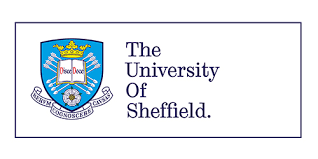Cellular Survival Strategy: Energy-Starved Breast Cancer Cells Consume Surroundings as a Source of Fuel
Energy starved breast cancer cells ingest and consume their surroundings to overcome starvation, a new study has found.
The research, conducted by scientists at the University of Sheffield and published today (Tuesday 16 January 2024) in PLOS Biology, provides a new insight into a previously unknown mechanism of cancer cell survival and may offer a new target for therapy development.
Cells in the breast, including tumour cells, are embedded in a meshwork called the extracellular matrix (ECM). Nutrients are scarce in the ECM, due to the limited blood flow, and become even scarcer as tumour cells grow.
Lead researcher Dr Elena Rainero, from the University of Sheffield’s School of Biosciences, and her team investigated how tumours continue to grow – despite the lack of nutrients – and how the tumour cells supply themselves with the raw materials to support their growth.
“This study identified a novel mechanism employed by breast cancer cells to survive in the challenging environment they are in within tumours,” said Dr Elena Rainero, from the University of Sheffield.
“As sources of food are scarce, cancer cells gain the ability to eat and digest components of the matrix around them. We have identified a key metabolic process that the cells need to be able to take advantage of the matrix, which could represent a novel therapeutic target.”
During the study, which was funded by Cancer Research UK, Dr Rainero and her team seeded breast adenocarcinoma cells into either collagen (a major component of the ECM) or a commercial matrix preparation, or onto plastic, with or without certain critical amino acids.
Without those amino acids, cells on plastic fared poorly compared to those in one or the other matrix. Similar results were seen with other matrix models – the tumour cells were able to overcome the reduction of amino acids when surrounded by matrix.
Next, by fluorescently labelling the collagen and watching its journey through the cell, the authors showed that the cells took up ECM and broke it down in digestive compartments called lysosomes; when the ECM was chemically treated to cross-link its components, the cells were unable to ingest it.
Further investigation indicated that uptake was through an ingestion process called macropinocytosis, in which the cell engulfs large quantities of extracellular material.
Analysis of their metabolome indicated that procurement and breakdown of two amino acids, tyrosine and phenylalanine, dominated the metabolic changes in response to starvation. The Sheffield scientists noted that these two can serve as the raw material for energy production through the mitochondrial tricarboxylic acid (Krebs) cycle.
When they knocked down 4-hydroxphenylpyruvate dioxygenase-like protein(HPDL), a central enzyme in the pathway from phenylalanine to the Krebs cycle, cell growth was significantly impaired.
Blocking or reducing expression of HPDL, or the macropinocytosis promoter PAK1, reduced the ability of tumour cells to migrate and to invade surrounding tissue.
Dr Rainero added: “Our results indicate that breast cancer cells take advantage of nutrients in the extracellular matrix in times of nutrient starvation, and that this process depends on both macropinocytosis and metabolic conversion of key amino acids to energy-releasing substrates.
“HPDL-mediated metabolism of tyrosine and phenylalanine could represent a metabolic vulnerability of cancer cells thriving in a nutrient deprived microenvironment.”
Dr Anna Kinsella, Research Information Manager at Cancer Research UK, said: “Thanks to research, breast cancer survival has doubled in the last 50 years in the UK, but there are still around 11,500 breast cancer deaths here every year.
“Research like this lays the foundations for future progress and is vital to develop better ways to treat breast cancer. While more research is needed before these findings can move from the laboratory bench to the bedside, the team’s insights offer a promising new route for future treatments.”

